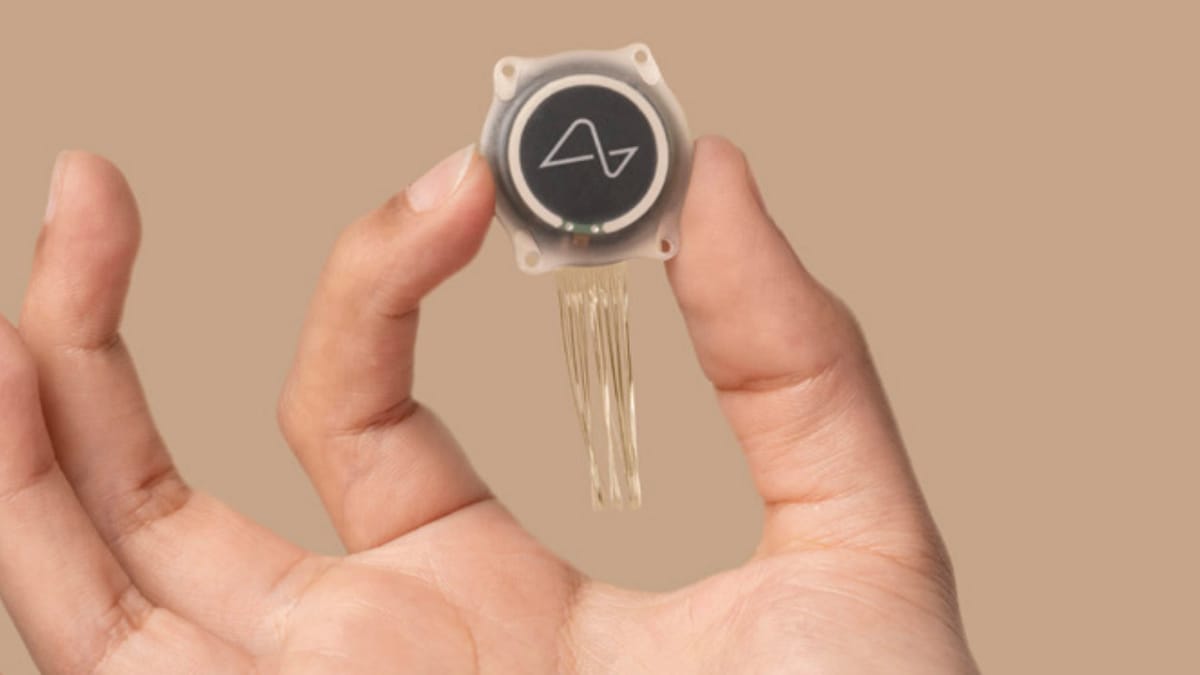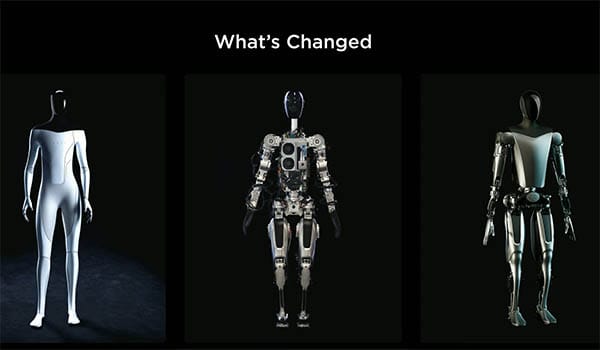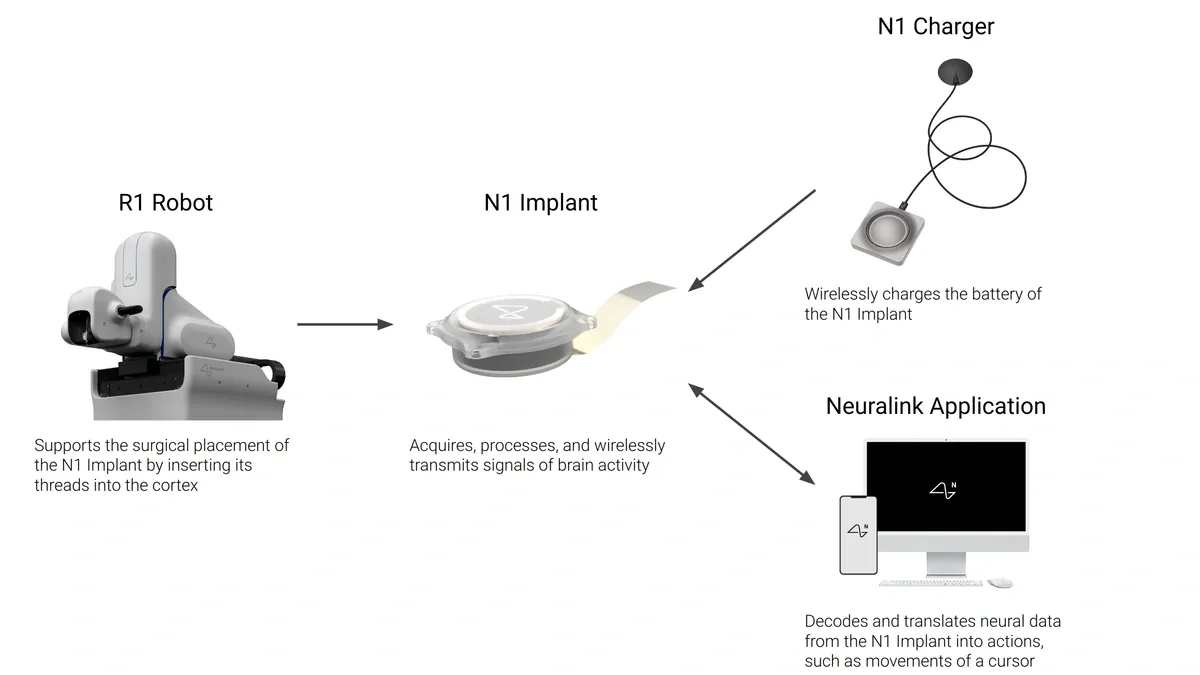Neuralink’s PRIME Study: Pioneering the Future of Brain-Computer Interfaces


In a remarkable step forward for neuroscience and technology, Neuralink has provided an update on their groundbreaking PRIME (PRomoting Independence with the Mind) Study, announcing the successful involvement of the second participant. This development marks a significant milestone in the company’s mission to bridge the gap between human minds and machines, offering new hope for those suffering from neurological conditions.
2nd Neuralink patient Alex plays the first-person shooter game Counter-Strike 2 on his laptop computer using the Link.
Alex playing Counter-Strike 2:
Understanding the PRIME Study
The PRIME Study is an ambitious clinical trial aimed at evaluating the safety and efficacy of Neuralink’s brain-computer interface (BCI) technology in humans. Specifically, the study focuses on individuals with severe paralysis, offering them the possibility of controlling external devices directly with their thoughts. The goal is to restore communication and independence to those who have lost these abilities due to conditions such as amyotrophic lateral sclerosis (ALS) or spinal cord injury.
Neuralink’s BCI is a small, coin-sized device implanted in the brain, designed to detect and interpret neural signals. These signals can then be translated into commands that control a computer, smartphone, or other devices. The implications of this technology are vast, with potential applications not only in medical rehabilitation but also in enhancing human capabilities and cognition.

Progress Update: The Second Participant
The latest update from Neuralink reveals that the second participant in the PRIME Study has successfully undergone the surgical procedure to implant the BCI device. This procedure, performed by a team of skilled neurosurgeons, is a critical step in the trial, requiring precision and careful planning to ensure the safety and effectiveness of the implant.
According to Neuralink, the surgery was completed without complications, and the participant is now in the initial stages of rehabilitation and device training. This process involves learning how to use the BCI to interact with digital interfaces, a task that requires both the participant’s adaptation and the fine-tuning of the technology.
The progress of this second participant is closely monitored by Neuralink’s team of engineers, neuroscientists, and medical professionals. Data gathered from their experience will be invaluable in refining the technology and improving the outcomes for future participants. This iterative approach reflects Neuralink’s commitment to not only developing cutting-edge technology but also ensuring that it is safe, reliable, and effective for its intended users.
Neuralink's PRIME Study is a pioneering clinical trial aimed at evaluating the safety and efficacy of brain-computer interface (BCI) technology in humans, specifically targeting individuals with severe paralysis. The study's primary goal is to enable participants to control external devices using their thoughts, thereby restoring communication and independence for those affected by neurological conditions such as amyotrophic lateral sclerosis (ALS) or spinal cord injuries.
Participants in the PRIME Study
The study has recently seen the successful involvement of its second participant, Alex, who has undergone the surgical procedure to implant Neuralink's BCI device. This device, known as the "Link," is a small, coin-sized implant designed to detect and interpret neural signals, which can then be translated into commands for controlling digital devices like computers or smartphones[1].
Progress and Capabilities
- Surgical Success and Recovery: The implantation surgery for Alex was conducted at the Barrow Neurological Institute and was completed without complications. Alex was discharged the following day and has experienced a smooth recovery[1].
- Rehabilitation and Training: Post-surgery, Alex is undergoing rehabilitation and device training. He has been improving his ability to play video games and has started learning to use computer-aided design (CAD) software to design 3D objects[1].
- Capabilities: The BCI allows Alex to control digital interfaces by thinking about the actions he wants to perform. This includes moving a computer cursor and potentially controlling a robotic arm or wheelchair in the future[1].
Challenges and Ethical Considerations
While the progress in the PRIME Study is promising, several challenges remain:
- Long-term Safety and Stability: Ensuring the long-term functionality and safety of the implanted devices is critical. Neuralink is working on developing materials and designs that can withstand the human body's environment over extended periods[1][2].
- Ethical Concerns: The development of BCI technology raises ethical questions about privacy, consent, and potential misuse. Neuralink emphasizes its commitment to addressing these concerns through transparency and collaboration with regulatory bodies and ethicists[4].
Future Prospects
The PRIME Study represents a significant step towards developing viable brain-computer interfaces. The data collected from the participants will be instrumental in refining the technology and improving outcomes for future users. While challenges remain, the potential benefits for individuals with severe neurological impairments are immense, offering a possibility for renewed independence and enhanced interaction with technology[1][3].
The Road Ahead: Challenges and Potential
While the progress in the PRIME Study is encouraging, it is important to recognize the challenges that lie ahead. Brain-computer interfaces represent a frontier in both neuroscience and technology, and the road to widespread adoption is fraught with scientific, ethical, and regulatory hurdles.
One of the primary challenges is ensuring the long-term safety and stability of the implanted devices. Neuralink’s engineers are working tirelessly to develop materials and designs that can withstand the harsh environment of the human body while maintaining functionality over extended periods. Additionally, the software algorithms that interpret neural signals must be robust, accurate, and adaptable to the unique brain activity of each user.
Ethical considerations also play a significant role in the development of BCI technology. The implications of directly interfacing with the human brain are profound, raising questions about privacy, consent, and the potential for misuse. Neuralink has stated its commitment to addressing these concerns, emphasizing transparency and collaboration with regulatory bodies, ethicists, and the broader scientific community.
Despite these challenges, the potential benefits of Neuralink’s technology are immense. For individuals with severe neurological impairments, the ability to regain communication and control over their environment could be life-changing. Beyond medical applications, BCIs have the potential to revolutionize how humans interact with technology, enabling new forms of communication, creativity, and even cognitive enhancement.
Conclusion: A Step Toward the Future
The involvement of a second participant in Neuralink’s PRIME Study represents a crucial step forward in the journey toward viable brain-computer interfaces. While there is still much work to be done, the progress so far is a testament to the dedication and innovation of Neuralink’s team.
As the study continues, the data collected will be instrumental in shaping the future of BCI technology, bringing us closer to a world where the mind can directly interface with machines. For now, the success of this second participant offers a glimpse of what is possible, inspiring hope and excitement for what the future may hold.
Neuralink’s ongoing efforts in the PRIME Study are not just about technology—they are about transforming lives, restoring independence, and ultimately, expanding the boundaries of human potential.
Citations:
[1] https://neuralink.com/blog/prime-study-progress-update-second-participant/
[2] https://www.barrowneuro.org/about/news-and-articles/press-releases/prime-study-site-announcement/
[3] https://www.cnn.com/2024/02/20/tech/first-neuralink-human-subject-computer-mouse-elon-musk/index.html
[4] https://www.statnews.com/2024/07/08/neuralink-elon-musk-scientific-ethics-brain-computer-interface/






